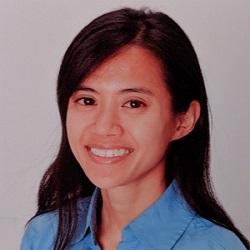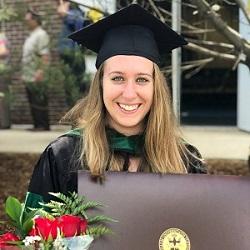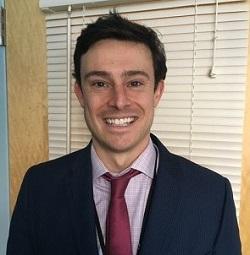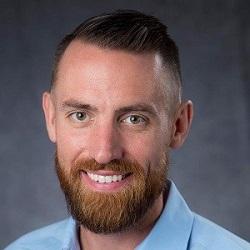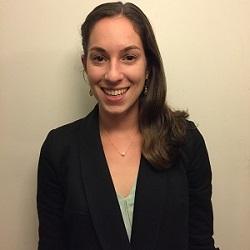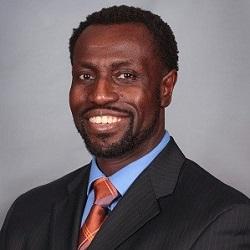-
About
- Departments & Offices
-
Academics
- Public Health
- Biomedical Sciences
- Physician Assistant
- Special Master’s (MBS)
-
Admissions & Financial Aid
- Tuition & Fees
-
Student Experience
-
- Student Resources by Program
- Academic & Student Support
- Wellness & Wellbeing
- Student Life
- Events & Traditions
-
-
Research
- Research Labs & Centers
- Tufts University-Tufts Medicine Research Enterprise
-
Local & Global Engagement
- Global Health Programs
- Community Engagement
On the Front Lines with the Underserved
What physicians caring for vulnerable groups are learning from the pandemic
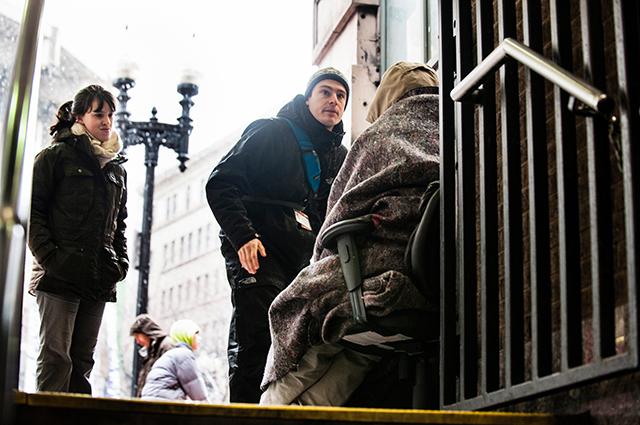
COVID-19 has been called “the great equalizer,” but statistics disagree. Recent data from APM Research Lab indicates that the virus is killing black patients at 2.4 times the rate that it is killing white patients. The Migration Policy Institute has found that counties with higher-than-average numbers of noncitizens also yield some of the country’s highest per-capita coronavirus rates. In eight U.S. states, Latinos’ share of confirmed cases is at least four times higher than their share of the population, according to The Covid Tracking Project.
These grim figures come as little surprise to the Tufts University School of Medicine graduates working with underserved patients. As doctors devoted to fighting disparities in health care, they already knew what the pandemic has reaffirmed: that viruses themselves may not discriminate based on ethnicity, income, or immigration status—but society does, with deadly consequences. We caught up with six of these alumni to hear how the pandemic is changing medicine, and the lessons they’re learning from the communities affected most.
Advocating for Immigrants
An-Hoa Giang, M17, MG17 (MPH)
Physician An-Hoa Giang encountered COVID-19 patients before most doctors in the United States did. On a public health mission to Vietnam during January and February, she suddenly switched from helping hospitals develop primary care models to screening patients for the virus. When she got back to her job as a third-year resident at the Family Health Center of Worcester, a federally-qualified clinic in Massachusetts, she knew what was coming.
She stepped into a leadership role, actively helping the hospital transform day-to-day operations and participating in important decisions as administration constructed and managed an outside tent to screen and test patients. And all of the changes had to be communicated to the diverse population of patients, who might speak Spanish, Cape Verdean Creole, Haitian Creole, Portuguese, or Albanian.
Giang is no stranger to the concept of language divide. Her early experiences as the daughter of Vietnamese immigrants sparked her commitment to helping the underserved. “I have really distinct memories of what it was like to face linguistic and cultural barriers growing up in Eerie, Pennsylvania, where there weren’t really that many other Asians around,” she said. “I truly carry that with me in my work.”
That conviction grew during medical school. As a member of the inaugural cohort of the Sam W. Ho Health Justice Scholars program (then known as the Tufts Student Service Scholars program), she found like-minded peers and mentors committed to fostering leadership qualities. “I knew I could become a leader,” she said. “And I knew what that would mean for people who are like me, looking up to me—that I could help somebody from a similar background realize their potential.”
As one of three chief residents, Giang has also been fiercely advocating for her fellow residents during a very difficult time. “My personal values of protecting my own residents—as well as protecting the underserved—have guided the decisions I’ve made during the pandemic,” she said. And that all goes back to where she came from: “I understand the strength that you can have if you have people and a structure in a community that encourages you to be able to fulfill your greatest potential.”
Systemic Racism Shapes Boston’s Patient Population
Lauren Malishchak, MG13 (MBS), M18
When coronavirus started spreading in the Boston area, Lauren Malishchak found herself at the center of the surge. As a member of the first COVID-19 team at Brigham & Women’s Hospital, the second-year resident witnessed the facility transform. Entire floors and buildings were converted into COVID-specific ICUs, which expanded as cases grew.
The pandemic has resulted in an unexpected crash-course in outbreak medicine for Malishchak. Among its many lessons is the importance of communication. “When we do go in patient rooms, we're gowned up from head to toe,” Malishchak said. “Patients can see our eyes, but not our full faces, which I think is really hard for them. We've had to be a lot more intentional about the ways we're communicating both with patients and with families.”
Another important lesson: “The patients we're seeing in Boston that are being impacted by COVID are disproportionately black and Hispanic,” she said. And that affirms something Malishchak has long understood. Back when she was a student in the Tufts Health Justice Scholars Program, she spent time working with historically underserved communities. That experience inspired her to enroll in the health equity track at the Brigham. It also led her to practice primary care at Upham’s Corner Health Center, a federally-qualified facility in Dorchester, which, along with the main Brigham hospital and the West Roxbury Veterans Affairs Medical Center, is now part of her residency. The patients she sees at Upham’s Corner mirror the populations most affected by the pandemic.
“I try to approach these patients with an equity lens, to think about how the systems that we have in place and systemic racism have led to communities of color suffering disproportionately from disease,” she said. “The pandemic has made it more obvious that we need to address systems of oppression if we're really going to improve the disparities that we see in health care.”
Medical Respite for the Homeless
David Munson, M09
Quarantining is complicated if you don’t have a home. “Homeless folks don’t have a place to isolate,” said David Munson, medical director of respite programs at the Boston Health Care for the Homeless Program (BHCHP). “They’re not able to physically distance in the way we have been advised to, the way that prevents the spread of this very infectious virus.”
Delivering medical care to the homeless is challenging even in the best of times. From stigmatization, to mistrust, to pre-existing conditions, Munson has developed a deep understanding of the issues facing the homeless in eight years working with this underserved group. He began his career at BHCHP as an internist on the Street Team, focused on caring for individuals who avoid shelters and live outside. For the past five years, he has been overseeing medical aspects of BHCHP’s respite programs—facilities for those who may not need a hospital stay but are too sick to be in the shelters or out on the street.
Munson knows that a virus can spread like wildfire once it hits a congregate setting like the one he oversees. During the third week of March, his team quickly converted half of a respite floor at BHCHP’s Barbara McInnis House into a space for people who had tested positive for the virus, introducing new protocols and personal protective equipment (PPE). As the outbreak grew amongst Boston’s homeless, that COVID-positive space tripled in size. Meanwhile BHCHP scrambled to ensure that their patients without coronavirus could stay safe, while operating testing tents and a 24/7 hotline for area homeless shelter staff to share concerns.
Along the way, Munson has provided clinical oversight, making sure best practices are followed and determining when patients can be safely discharged. In some ways that’s not so different than his pre-pandemic role, he says. And while the challenges of serving his clients are compounded by coronavirus, they still boil down to fundamental inequities that always lurk beneath the surface. “If you look at who’s getting sick, it’s folks that are in more crowded conditions, those who have been unable to isolate for whatever reason,” Munson said. “It’s reaffirmed what we already know about disparities in health care.”
Taking Medicine to the Streets
Adam Normandin, MG11 (MBS), M15
A volunteer stint with Boston Health Care for the Homeless Program is what inspired Adam Normandin to become a doctor. Working at the respite center that David Munson now oversees was a transformative experience. “I had really moving interactions with people,” he recalled. “When I got to meet people experiencing homelessness and hear their stories and understand their medical needs, it all came together. It pushed me to apply and go to Tufts.”
Today—in addition to working as a primary care physician at Portland Family Medicine and a faculty member in Maine Medical Center’s Family Medicine residency program, Normandin is outreach director at Preble Street Learning Collaborative (PSLC), an organization that aims to meet the unmet needs of Portland’s homeless population. The PSLC runs a walk-in clinic near the city’s main homeless shelter. Staffed with medical professionals, it also includes a team of social workers—and that, Normandin said, “is where the magic lies.” Clients might come in for an acute medical issue, but leave with much-needed help accessing housing, food stamps, or other benefits.
The pandemic has reinforced what Normandin has long argued: that a holistic approach is best when working with the underserved. Homeless individuals face major obstacles in accessing health care to begin with. As doctors nationwide transition to video chats for medical appointments during COVID-19, telehealth threatens to further marginalize the community by excluding those lacking computers and internet access. “Just because someone who’s experiencing homelessness can’t make it into the doctor’s office - or a Zoom meeting - doesn’t mean they’re not interested in working on their medical issues,” Normandin says. “It’s just more evidence of the barriers they face.”
To combat coronavirus and prevent other medical issues from falling by the wayside, Preble Street has helped create new shelter sites and doubled down on community outreach. Normandin spends his PSLC shifts out in the streets alongside social workers delivering medicine and support directly.
Thanks to those efforts, Normandin reports that the organization has seen fewer than ten cases of COVID-19 among Portland’s homeless. While the pandemic still looms large, those numbers give him hope. “In the past year we’ve been developing plans for street outreach programs, and the crisis has really accelerated our efforts to get out there,” Normandin said. “Probably the number one lesson we’ll take from this crisis is the importance of finding creative ways to meet people where they’re at, both medically and physically.”
Lawrence’s Latino Surge
Rebecca Joseph, M18
If you’ve heard the reports of Latino communities being disproportionately impacted by COVID-19, Rebecca Joseph can confirm them. Joseph is a resident practicing medicine in a city of immigrants. At the Greater Lawrence Family Health Center she divides her time between a federally-qualified health center and a community hospital, often speaking Spanish with her many patients from Latin America.
Most of Joseph’s COVID-19-positive Latino patients are essential workers unable to work from home or take time off. Many live in crowded or substandard housing which makes it difficult for them to self-isolate. The result? “We’re seeing a huge number of cases. It’s pretty much a constant flow of people,” she said.
Working in the COVID-19 unit has put faces to the statistics. Some patients have made an outsized impact on the budding doctor: the 92-year-old man struggling to connect with family during his final days; the undocumented woman who had worked in the United States to support fifteen children in Guatemala, and whose dream of one day returning home to them was slashed when COVID-19 complications resulted in a lifelong dependence on dialysis. “I feel privileged to help these families navigate this really hard moment in their lives,” Joseph said, “but it’s also really tragic.”
Joseph participated in the Sam W. Ho Health Justice Scholars Program while at Tufts, which fostered her interest in working with underserved communities. “Often people who come into medical school thinking they’re interested in working with underserved populations will lose that interest by the time they graduate because of all the different pressures they’re feeling,” she said—but the program’s peers and mentors helped Joseph stay committed. She also developed a deeper understanding of how poverty, marginalization, and health intersect—a nexus that the pandemic has illustrated all too clearly.
While already well-versed in the challenges of working with the underserved, Joseph is now learning unexpected lessons about end-of-life care and palliative care. “My fellow residents and I are just starting out, but we’re spending most of our time now faced with really hard situations, helping families through losses that they didn’t expect,” she said. “It’s going to impact us for the rest of our careers.”
Ensuring Access for Native Americans
Hakeem O. Adeniyi, Jr., A03, M09
At the Sacramento Native American Health Center (SNAHC) in California, Hakeem Adeniyi’s official title is medical director—but he describes himself as a “comforter.” His work with underserved communities predates his medical career; as early as high school, Adeniyi was working in inner-city public education programs. From his residency at San Francisco General Hospital, to joining the SNAHC team late last year, Adeniyi has always practiced community medicine in urban settings.
While many Native American communities are experiencing disproportionately high rates of COVID-19, Adeniyi said, reservations appear to be bearing the brunt of the disease. He is relieved to report that he has not seen that pattern play out nearly as much among his patients in the city of Sacramento. He still thinks that the pandemic will reshape the way he practices medicine—and some of those changes could be positive.
For one thing, insurance companies have loosened restrictions on virtual appointments. While telehealth may not work well for all underserved communities (as Adam Normandin explained), Adeniyi is excited about what it means for his patient population—a group that often faces obstacles to simply getting to the doctor’s office. While federally-qualified health centers often see 20 to 25 percent no-show rate for appointments, telemedicine has reduced Adeniyi’s no-show rate to about five to 10 percent.
Adeniyi is relieved to see one barrier to access recede for a community that faces so many. “Underserved communities are very resilient,” he said. “Many times they're viewed as being very vulnerable—but they’ve been able to deal with things that many people would not be able to deal with. So when they are able to make it to the clinic, my goal is to be their cheerleader and get them to the next step towards meeting their goals.”
